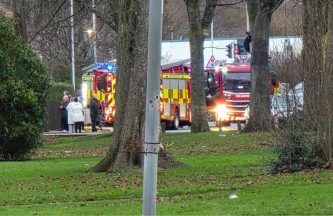Vacancies within the NHS have reached “record levels”, as new figures showed that more than 500 consultant positions and almost 5000 jobs in nursing and midwifery are vacant.
The Royal College of Nursing (RCN) Scotland demanded action as it emerged that in June this year vacancies within nursing and midwifery amounted to the whole time equivalent (WTE) of 4854.4 posts.
That is the highest number ever, the union claimed, up from 4013.1 WTE posts in June 2019, with the current total meaning 7.1% of roles are unfilled.
Meanwhile, the same figures showed 541.8 WTE consultants posts were vacant in June – with this up from a previous high of 513.9 WTE posts two years ago.
RCN Scotland claimed the vacancy rates in some areas – such as NHS Highland, NHS Shetland and NHS Dumfries and Galloway – meant that more than one in ten nursing and midwifery roles were lying empty.
The union added that across Scotland, 386 (or 9.3%) of district nursing posts are vacant, while there are 874 mental health nursing posts unfilled – a record high which represents a vacancy rate of 8.4%.
With RCN Scotland currently locked in a pay dispute with the Scottish Government, union leaders insisted a “fair pay rise” was needed to “retain and recruit the nursing workforce Scotland needs”.
Julie Lamberth RCN Scotland board chair said: “It is deeply worrying to have record numbers of nursing vacancies at a time when Covid cases are on the rise.
“Nursing staff across hospital and community services are under significant pressure trying to maintain services while being conscious that the number of people waiting for treatment is growing each day.”
She said the Scottish Government “will be unable to meet its aspiration to increase activity by 10% with more than 4800 nursing and midwifery posts left unfilled”.
Ms Lamberth said: “Extra funding for additional beds and diagnostic centres will be of no use if we don’t have the staff, and most often that means nursing staff, to run them.”
She continued: “RCN Scotland members are telling us that they have never been under greater pressure and with so many vacancies adding to the strain, we are seeing work-related absences on the rise.”
By June this year, NHS Scotland employed the whole time equivalent of 152,597.1 staff – with nurses and midwives making up more than two fifths (41.7%) of the overall workforce.
The Health Secretary, Humza Yousaf, said: “Staffing levels in Scotland’s NHS have reached a new record high after an increase of over 5000 whole-time equivalent staff in the last year.
“NHS Scotland’s workforce has now grown by over 20% under this Government. This means an extra 25,000 staff working in our health service, achieved by nine consecutive years of staffing increases.”
He added that the Scottish Government’s NHS Recovery Plan had included £11m of funding for “new national and international recruitment campaigns and to establish a national Centre for Workforce Supply”.
But Labour health spokeswoman and deputy leader, Jackie Baillie, warned Scotland was facing a “staffing disaster in nursing, with thousands of posts going unfilled”.
Baillie said: “Alongside shortages of nurses and midwifes, we know that we face a potential exodus of doctors and consultants.
“With the NHS in crisis, these shocking shortages threaten to lead to patients missing out on vital treatment and greater pressure being put on staff.
“The SNP needs to act and act now to prevent a catastrophic shortage of nurses and midwifes across Scotland.”
Dr Graeme Eunson, chair of the BMA’s Scottish Consultants Committee, said that almost 220 of the vacancies for consultants had been unfilled for six months or more.
He stated: “We have been warning for some time that consultant vacancy rates in Scotland are at a critical level. These figures show yet again that the substantial long-term gaps in Scotland’s workforce are a growing and serious concern – stretching the workforce to the limit and affecting the ability to doctors to deliver the high-quality patient care they strive for.”
Dr Eunson added: “The NHS in Scotland needs urgent and long-lasting action to ensure there is a full and clear workforce plan that focuses on the numbers of doctors required in the short- medium- and long-term, with clear measures set out to boost recruitment and retention – an issue that has remained unaddressed for far too long and is frustratingly missing from the Scottish Government’s NHS recovery plan.”
Follow STV News on WhatsApp
Scan the QR code on your mobile device for all the latest news from around the country


 iStock
iStock

























